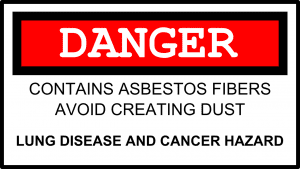“It is widely known that asbestos is one of the most harmful chemicals known to humankind.” ~ California AG Xavier Becerra
In a country that had been the world’s greatest consumer of asbestos, Professor Irving J. Selikoff established in the 1960s a link between the inhalation of asbestos particles and lung-related illnesses. He found that workers exposed to asbestos often had scarred lung tissue 30 years after exposure. Dr. Selikoff was a pioneer in environmental and occupational medicine, also responsible for having pressured the Occupational Safety and Health Administration to limit workplace exposure to asbestos.
Starting with 2004, legislative bodies in some key jurisdictions began to enact medical criteria laws requiring asbestos claimants to present plausible and objective medical evidence of physical impairment in order to proceed with a claim. While other countries have addressed asbestos injuries through centralized benefits programs that combine costs and risks, the U.S. has relied heavily on litigation. Asbestos litigation is a type of toxic tort lawsuit, typically brought against manufacturers, distributors, and suppliers of asbestos-containing products and materials. By the early 2000s, an estimated 730,000 claims had been filed, targeting over 8,400 companies in 75 of 83 categories of economic activity within the U.S. economy.
Now, asbestos litigation appears to be evolving once again. A trial court ordered Johnson & Johnson in the summer of 2018 to pay $4.69 billion to 22 women, who alleged that the company’s talc-based products contain asbestos, which can naturally occurs near talc, and caused them to develop ovarian cancer. In 2019, the world’s largest manufacturer of health-care products, including baby powders, is facing a considerable number of talc-related lawsuits nationwide. There are at least 21 trials on court calendars targeting Johnson & Johnson over tainted talc, including more than 15 in California’s courts and one in Georgia. Lawsuits are no longer the only concern for J&J, as the company’s stock dipped on after a woman in California, who claimed that asbestos found in its talc-based powder products had caused her to develop mesothelioma, was awarded $29 million by a jury on 14 March. J&J says it will appeal the judgment pointing to “serious procedural and evidentiary errors”. “Research, clinical evidence and nearly 40 years of studies by independent medical experts around the world continue to support the safety of talc. Talc does not cause cancer”, the healthcare company says.

It is tempting to remove asbestos as a problem of the past. Yet, the ‘magic mineral’ is getting something of a comeback. The Environmental Protection Agency is reportedly easing up on asbestos regulations by allowing new asbestos products to enter the market. Under the proposed rule, the agency is allowing companies to manufacture, import and process new asbestos-containing products after it evaluates their potential health dangers. However, the issues surrounding asbestos or the material itself will not go away.
More than a dozen U.S. state attorneys-general are petitioning EPA to draft a policy to collect more data on harmful asbestos. “It is widely known that asbestos is one of the most harmful chemicals known to humankind. There is no excuse to continue allowing any amounts of toxic asbestos to pass into our community, especially into the lungs of workers and children, when we know the danger it presents. We call on Acting Administrator Wheeler to begin the process of eliminating exemptions that allow this unsafe chemical to continue to harm tens of thousands of people each year”, said California AG Xavier Becerra.
The petition, dated 31 January 2019, was filed by attorneys from 15 states including California, Massachusetts, Washington, New Jersey, New York, and the District of Columbia. The EPA is required to grant or deny it within 90 days.


Join the conversation!